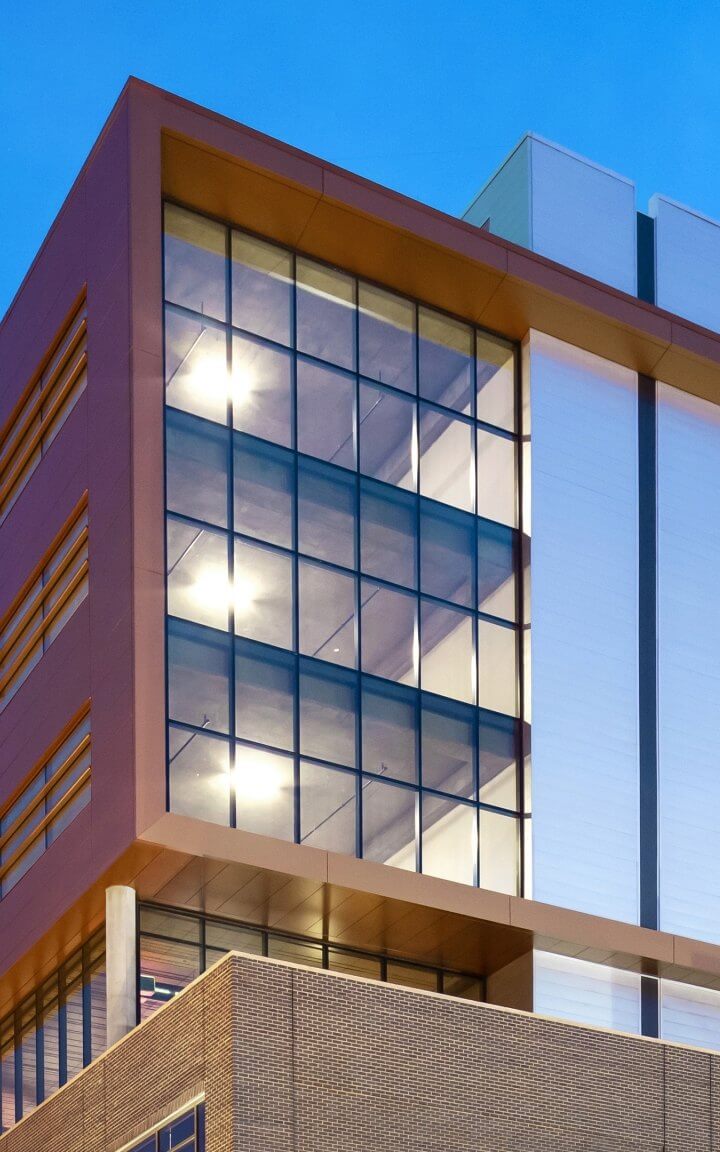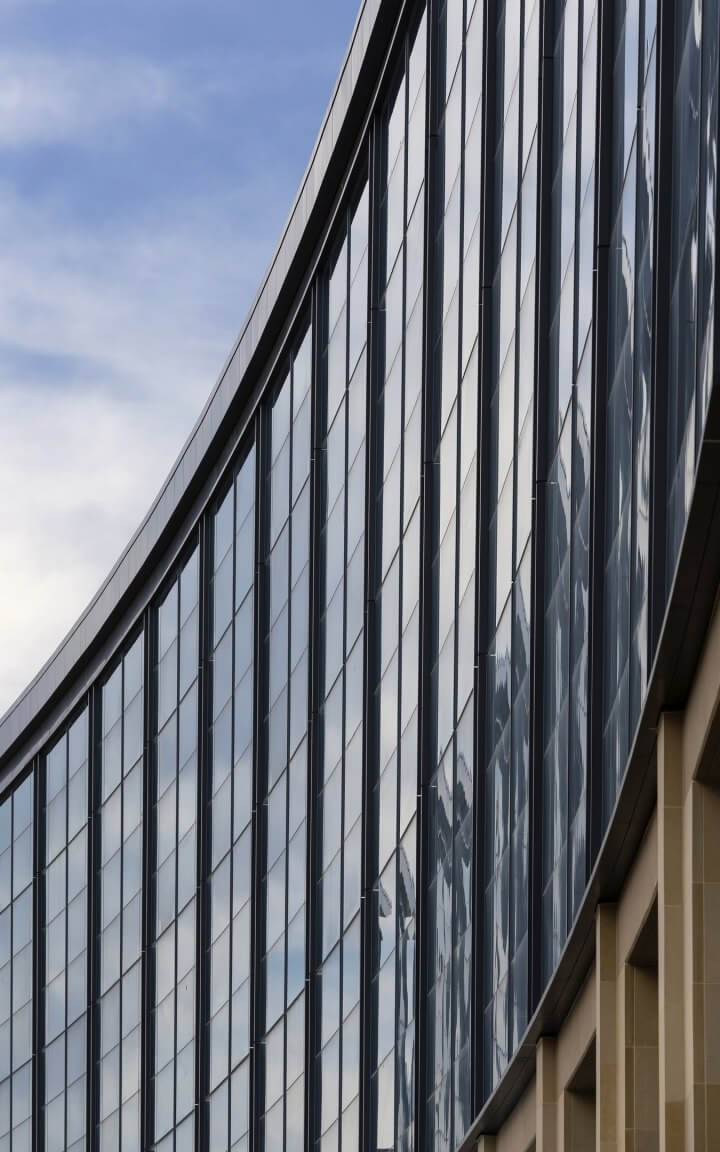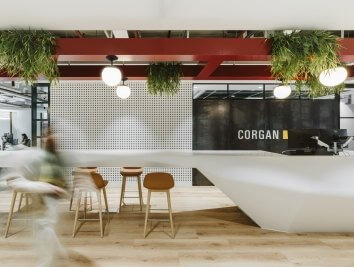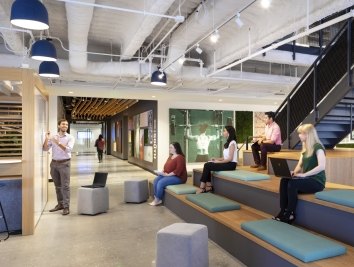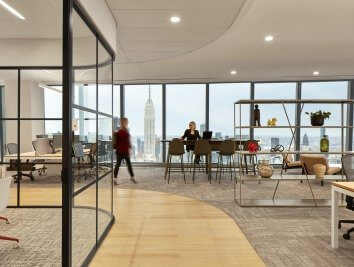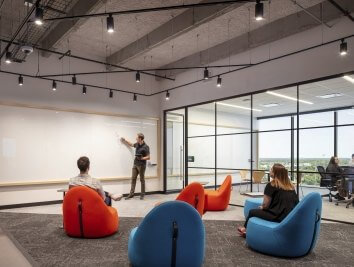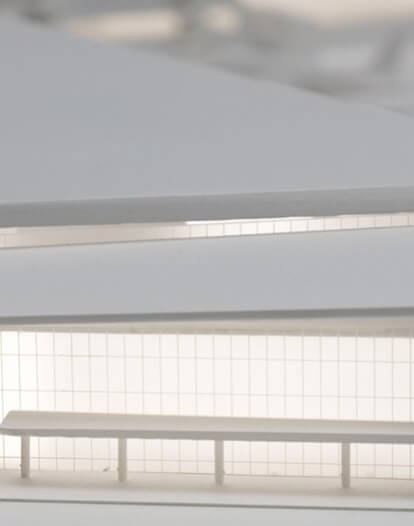Bringing Culture and Connection Back to the Workplace
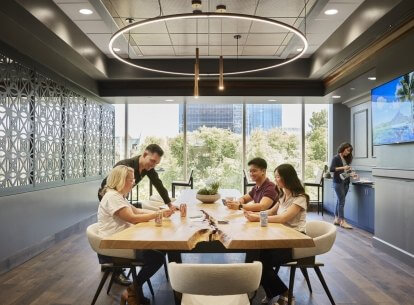
It’s one of the unspoken questions in the (ongoing? permanent? soon-to-be-wrapped-up?) debate about in-person work versus remote work: How can the office be better than home? Or, for the non-believers — can the office be better than home? Home is, for many, the place of maximum comfort and convenience. There has never been — will never be, short of a Jetsons-level invention — an easier commute than the one between your bed and your desk setup. Your fridge has exactly the snacks you love and if someone burned an empty coffee pot again, you probably only have yourself to blame. But, when we gained this comfort and convenience, we all began to lose out on the culture and connection of in-person work. So, let’s reframe the question — why should we invest in making the office better than home?
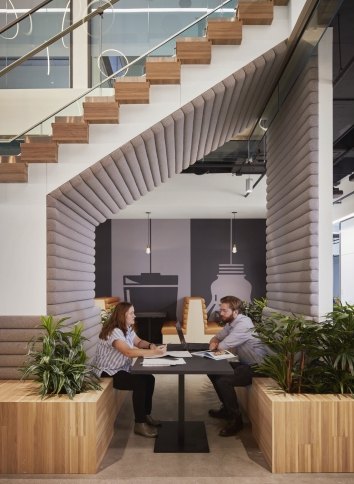
Beyond collaboration:
The balance between “me” space and “we” space has been in flux since well before the Covid-19 pandemic. Knowledge workers and employers recognized the value of collaborative work and believed enough in its positive outcomes to invest in design solutions that enabled and enhanced collaboration. However, as collaboration drove the allocation of space toward shared spaces over individual spaces, workplaces prioritized collaboration as a catalyst for workplace culture, group productivity, and innovation while at the same time diminishing the need for individual space that workers could call their own.
As the pandemic forced many workers to work in solitude away from the office, those who were craving individual space that was “right for them” suddenly had agency over what their workspace could be in the comfort of their homes. Likewise, collaboration suddenly had to adapt to virtual connections, and for many, this version of collaboration mixed with the comforts of home and control of individual privacy in between meetings made the home seem like a good solution for work.
From years of studies pre-dating the pandemic, we know that physically gathering in a place to work toward common goals and a shared purpose is a powerful way for humans to connect and feel a sense of belonging, a need that must be fulfilled for individuals to reach self-actualization. For workplaces to be effective, the new work environment must satisfy the needs for individual focus and a sense of autonomy and control while simultaneously enabling collaborative work and human interactions that bind people to one another – and to the organization they support.
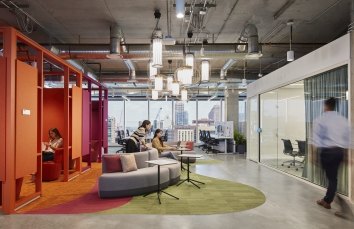
New drivers for culture:
For the in-person experience to be truly valuable to employees, it should facilitate the things that are less successful in a remote arrangement. Connection, mentorship, friendship – these things cultivate a sense of belonging driven by frequent proximity to people you share an affinity for – a concept known as propinquity. For recent graduates entering the workforce and new employees, the nuances of company culture are often discovered through passive learning and in-person encounters with coworkers. Even for seasoned employees, learning new processes and work culture may take longer in a remote work environment, thereby slowing productivity. Approximately 75% of respondents in the Hybrid Report found their friends at work — we know there is a direct connection between a positive culture, proximity to people you share an affinity for, and the frequency in which you share space with those people, leading to friendships in the workplace and higher productivity. Having an accountability partner check in on you can provide a feeling of support, but even a casual connection — like working next to a busy coworker — can provide a buzzy coffee shop energy that improves focus and motivation.
Designing for that culture and connection — for belonging — involves programmatic choices that both express the ethos of the organization and encourage desired outcomes like congregation near centrally-located resources (ex: coffee bar, puzzle table, work café) and productive “heads down” work in quiet, parallel workspaces. Engaging in some gentle social engineering via spatial arrangements and programming can help companies encourage social interaction, reinforce employee wellness habits, and improve productivity — improving employee satisfaction, connection to the company, and underlining the value of the office.
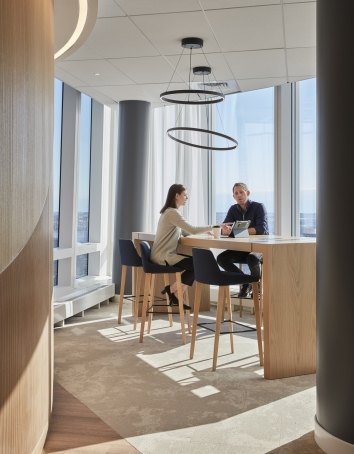
Challenges of connection:
During one year of the pandemic, 20% of the working population left their jobs — most of those employees felt disconnected from their organizations, making it easy to leave. Leaders surveyed in the Hybrid Report were concerned with creating spaces for their employees that encouraged relationship building through the design that supports and encourages social interaction through dynamic work environments (connection) as well as spaces for separating from the work and focusing on building relationships with coworkers (culture).
Remote workers faced more difficulty integrating into the company culture, resulting in more time spent becoming efficient and productive. Even seemingly small tasks — like filling out your timesheet — might feel insurmountable when you don’t have someone to look over your shoulder and point out the button you aren’t seeing. More broadly, a lot of information at work is transferred via personal connections, so those workers without close connections may end up feeling (or being) left out.
Another challenge to connection is reliability. Programming that clearly directs behavior can instill a comfortable level of predictability while facilitating the flexibility that workers enjoy with hybrid work. This way, employers can avoid the dissatisfaction of workers who show up in the office only to find that the people they want or need aren’t there. These guidelines can also help employees better define their “on” and “off” times so they can find a better work-life balance.
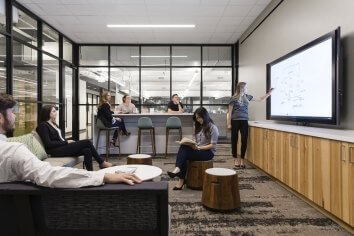
Designing for connection and culture: The Seven “E”s:
The paradigm shift hastened by the pandemic means that the purpose of coming into the office needs to be clear to employees and deliberately designed. First and foremost, employees need to feel safe physically and psychologically. Second, the office should function better than the employee’s home office setup – if the technology and resources at the office aren’t better than what employees have at home, they are likely to save themselves the commute. Finally, the experience of work at the office should be better than the experience at home in promoting professional and personal fulfillment.
Facilitating a better workplace experience is more than simply adding hand sanitizing stations, having IT support to fix printer jams, or upgrading HVAC systems with powerful filters. Good workplace design will use the right mix of spaces for specific users, corporate values, and inspire motivation. Designers can offer a better experience and culture by focusing on the seven “E”s:
- Employee-focused: provide what workers need individually and collectively to be productive.
- Engaging: facilitate engagement with mentors, peers, and friends as well as the ethos of the company brand
- Ergonomic: support healthy postures and employee well-being through functional furnishings
- Educational: encourage passive learning via unscheduled interactions that are unnatural with remote work
- Easy: enable a frictionless experience between modes of work through technology, amenities, and spatial arrangement
- Equitable: level the playing field through design that considers the needs of a diverse workforce and enhances belonging
- Empathetic: reinforce the “bring your whole self to work” ethos by supporting personal needs of workers (ex: mother’s rooms, spaces for prayer and meditation, and wellness areas)
Belonging, connection, culture – these things matter universally on a human level, and we can’t ignore them when we spend one-third of the day at work. So, why should we invest in making the office better than home? Because we are better when we are together. How can we make working in the office better than working from home? By making jobs easy to do and connections easy to find. Working from home gave people professional fulfillment in the personal sphere. To get people back in the office – and happy about it – we need to facilitate personal fulfillment in their professional sphere.
